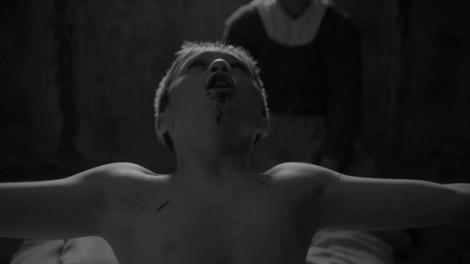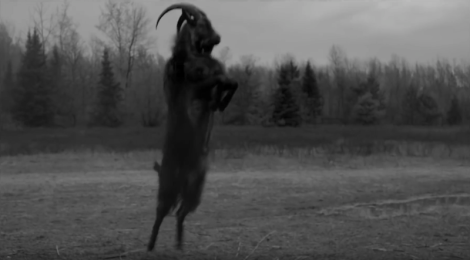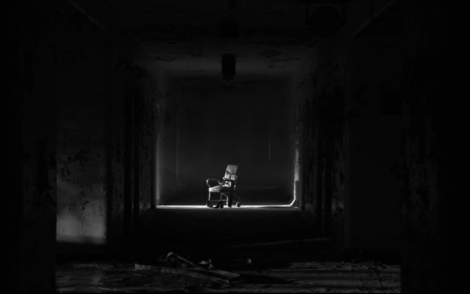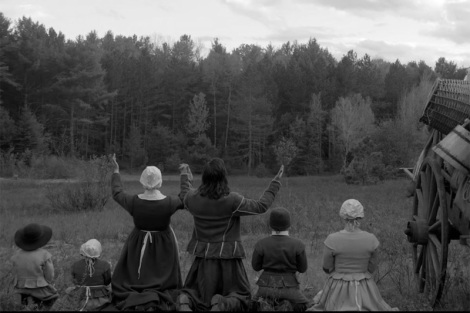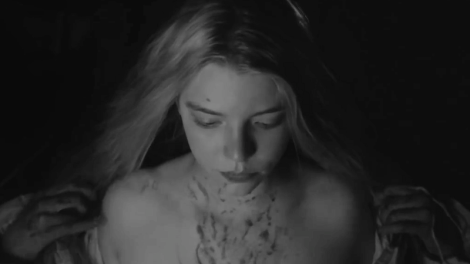After the last blog post where I revisited The Conjuring to point out its myriad cheap tactics that rendered it more of a theme park attraction than a horror movie, I caught Robert Eggers’ The Witch, aka The VVitch (vvhich … I mean, which is still showing at Singapore’s The Projector).
Much praise has been heaped upon Egger’s directorial debut (he started out as a production/costume designer). It certainly piqued my interest, especially in the face of so many “theme-park horror movies” such as James Wan’s output that seek to disorient rather than to genuinely put the creepers in you.
Now, here I want to digress a little bit, as I have since discovered another insidious (forgive the pun) reason why Wan’s horror movies featuring Ed and Lorraine Warren should be avoided. Quite simply, the movies glorify fraud and frauds.
The Warrens have since been exposed as fakes who knowingly committed fraud, falsifying evidence, most notably in the Amityville case, a legendary haunted house that has long been shamed as a hoax, a fact that has strangely had no effect whatsoever on paranormal enthusiasts who continue to spread the Amityville hoax far and wide. You can read a top 10 list of the Warrens’ shenanigans here. The thing is, Lorraine is a paid consultant on Wan’s movies (Ed died in 2006), and it’s hard to imagine Wan being totally unaware of the hoaxes perpetrated by the opportunistic Warrens, some of them totally despicable because lives were ruined. It’s therefore morally unsound to further perpetuate the hoaxes and add to the monetary gains of the perpetrator(s). But hey, that’s Hollywood.
Back to The Witch. I don’t have much to say about the film that has not already been said by many others. Yes, I was late to the game, but better late than never. At a glance, it would seem that the story is pretty much anti-religion, because in the film, even well-intentioned, good people are destroyed by their fervent religious beliefs, and the one who rejects conformity is the one who breaks free and gains (supernatural) power. It’s no wonder the satanic church publicly endorsed the film.
But upon closer inspection, the religiosity portrayed in the film is an early form prevalent in the 17th century that is constricted by a certain fundamentalism and literal interpretation that eventually leads to confusion and paranoia. But then, the evil in the film also takes on literal form.
But as a horror film, The Witch takes on classical genre tropes, and takes its time to foment hysteria and a sense of foreboding. It’s the characters, and their hopelessness in the face of an unknown evil, that terrify us more than any jump-scare can.
Some years ago, I caught Brad Anderson’s excellent Session 9 when it was shown here in the cinemas. The film was completely disturbing, with Anderson successfully creating a world where even the sunlight looks a little weird. It was also the film that convinced me that an empty chair in an empty room is far scarier than any long-haired ghost flash-cut into a scene. I went home and told a friend about it. He went to see it the next day, but told me, “I don’t know. It’s not that scary.”
But later that night, something happened to him. I received a text message from him that said: “The film stayed with me, and now, at night, when I think about it, it creeps me out!”
That’s what a good horror film does to you. It gets under your skin and never leaves. Session 9 is an even more understated horror film than The Witch, which says a lot about how good it really is. The Witch, admittedly has at least two jump-scares, and one of them I felt was quite unnecessary, but at least they are courtesy of elements that are deeply entrenched in the plot and not some extraneous cat or banging door.
In both Session 9 and The Witch, it’s the placement of the characters and their surroundings that, in turn, places us in an uncomfortable viewing context. The cleaning crew at the abandoned mental asylum is just a step away from the dark corridors and hallways that threaten to swallow them whole, much as the family who left the safe confines of their village find themselves at the edge of a very dark forest that seems to want to consume them. In the former, what plays out is more psychological than physical, and in the latter, it’s both.
Along with the unsettling combination of sex and religion – two elements that will never sit peacefully together at the dinner table – the family and gender dynamics, and sexual flowering of the teenage daughter play along with the whispering, dark trees and the shadowy wind to create an unbearable atmosphere in The Witch. This is fatalistic horror at its most unnerving.
Compare that to movies like The Conjuring and ilk, where the plot is an excuse for one set-up after another (character hears strange noises from the basement, and for no apparent reason, goes down to check it out, thus setting her up for some scares). The Witch‘s moments of dread are completely plot-driven (the siblings enter the haunted forest because of the need to redeem themselves in their parents’ eyes). The latter is about putting a cast of characters in a situation and letting them react to it. The former is about creating situations for the characters as set-ups for the audience. Thus, for films like The Witch or Session 9, the audience members are never aware of themselves, while the complete opposite happens for movies like The Conjuring.
The more effective horror films also tend to have no heroes, so that you never know what’s going to happen to whom and what the resolution will be, if there is one. If there is indeed a clear-cut hero, then the hero is usually so damaged that you don’t know what she or he will do next, or be driven to do, for instance, McReady in John Carpenter’s The Thing or Father Karras in The Exorcist. There’s that darn fatalism again!
But in The Conjuring, the “heroes” are clean-cut, honest to goodness people with a genuine willingness to help those afflicted by the paranormal. Their clean image telegraphs their fate way before the ending. That’s just too bad, because had the filmmakers stuck with the tainted personalities of the real people the movies’ characters are based on, things might just be a tad more interesting.

